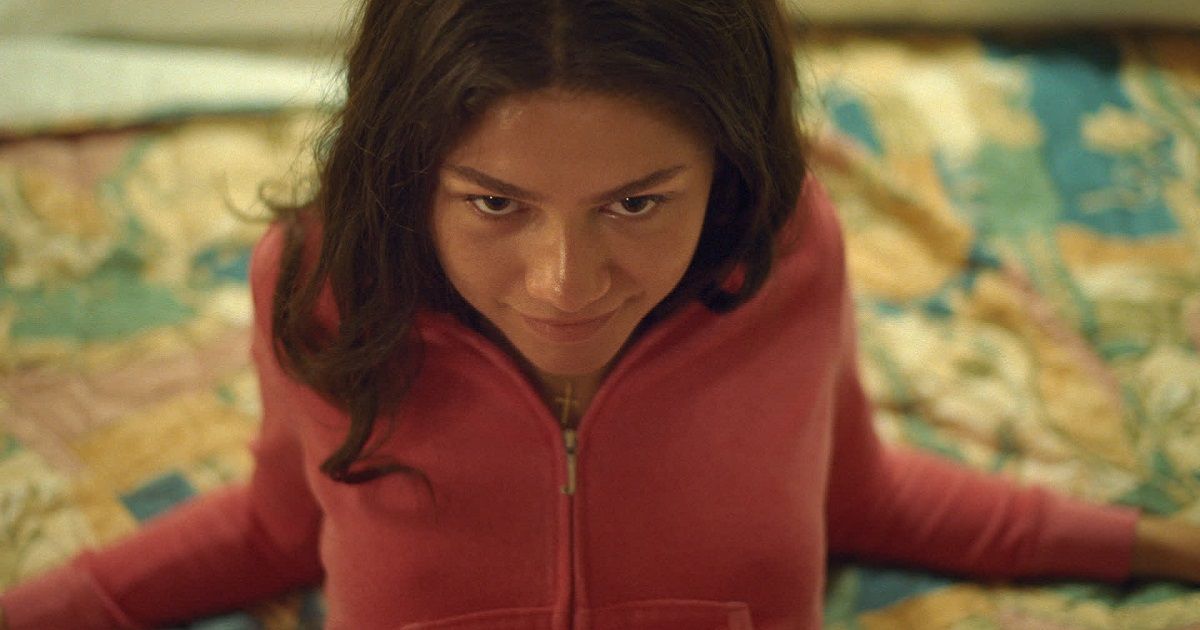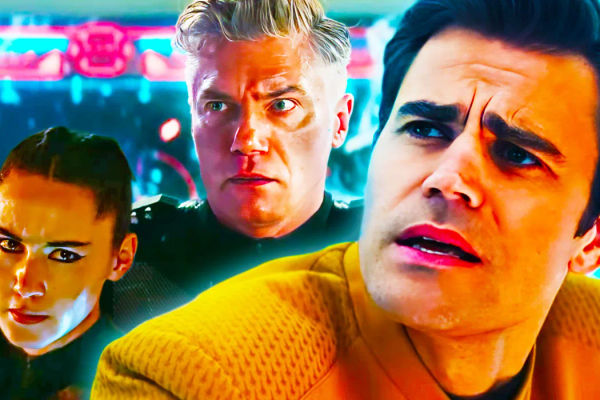Stephen King Vs. Hollywood: 5 Famous Feuds

Table of Contents
Stephen King, the undisputed king of horror, has a complex and often contentious relationship with Hollywood. While his novels have spawned countless movies and miniseries, the adaptations haven't always been faithful, leading to some legendary feuds. This article delves into five infamous clashes between the author and the film industry, revealing the battles over creative control, casting choices, and the final product. From wildly different interpretations to outright rejections, these confrontations shaped the landscape of Stephen King adaptations and continue to fuel debate among fans and critics.
The Shining (1980): Kubrick's Vision vs. King's Nightmare
King's Public Disdain:
Stephen King's vocal disapproval of Stanley Kubrick's adaptation of The Shining is legendary. He famously criticized Kubrick's version for straying significantly from the source material, altering the core themes and character development. King felt Kubrick's film missed the crucial psychological horror elements present in the novel, focusing instead on a more stylistic and visually driven approach.
- Key Differences:
- Jack Torrance's Character Arc: The novel portrays Jack's descent into madness as a gradual process driven by external and internal pressures. Kubrick's Jack, while unsettling, is less nuanced and psychologically complex.
- Omission of Key Plot Points: Several key plot points from the book, including the detailed exploration of Jack's past and the significance of the Overlook Hotel's history, were omitted or significantly altered.
- The Ending: The film’s ending differs dramatically from the book's more emotionally resonant conclusion.
King famously stated, “Jack Torrance in the book is a man whose sanity is slowly, subtly eroded…Kubrick’s Jack Torrance is just nuts from the start.” Despite King's negative appraisal, Kubrick's The Shining has achieved iconic status, cementing its place as a cinematic masterpiece, albeit a very different one than the novel.
The Running Man (1987): A Twisted Adaptation
A Case of Creative Differences:
The Running Man adaptation provides a stark example of a Hollywood interpretation that radically diverged from the source material. While the basic premise remains – a condemned man competing in a deadly game show – the film significantly altered the tone, plot, and ending.
- Key Differences:
- Tone: The novel is a darkly satirical commentary on media, violence, and societal control. The film leans more towards action and sci-fi thriller, diminishing the satirical elements.
- Plot: The film’s plot simplifies the novel's complexities, streamlining the narrative and omitting crucial subplots.
- Ending: The film's ending is dramatically different, offering a more straightforward resolution compared to the novel’s ambiguous and thought-provoking conclusion.
The significant changes were largely driven by the studio's desire for a more commercially appealing action film. King, while not openly feuding as he did with Kubrick, was reportedly disappointed by the drastic departure from his original vision.
Maximum Overdrive (1986): King's Directorial Debut and its Shortcomings
Behind the Wheel of Disaster:
Stephen King's directorial debut, Maximum Overdrive, stands as a cautionary tale. The film, featuring sentient trucks and other machinery wreaking havoc, was a critical and commercial flop.
- Reception and Reflections: The film's overwhelmingly negative reception highlighted the challenges of transitioning from writer to director. King himself has acknowledged the film's shortcomings, attributing some of the issues to the rushed production and creative differences with the crew.
- Creative Choices: Specific creative choices, such as the film's over-reliance on special effects and its uneven tone, contributed to its underwhelming performance.
- Influence on Future Collaborations: This experience undoubtedly shaped King's approach to future collaborations with Hollywood, emphasizing the importance of a collaborative process and strong directorial vision.
The Shawshank Redemption (1994): A Rare Success Story
A Triumphant Adaptation:
The Shawshank Redemption serves as a shining example of a successful and faithful adaptation. Frank Darabont's film captured the essence of King's novella, earning critical acclaim and solidifying its place as one of the greatest films ever made.
- Critical Acclaim and Lasting Impact: The film garnered widespread praise for its powerful storytelling, exceptional performances, and its thematic resonance. It continues to inspire and resonate with audiences.
- King's Positive Reaction: King openly expressed his admiration for Darabont's adaptation, praising its faithfulness to the source material and its emotional depth.
- Collaborative Filmmaking: The success of The Shawshank Redemption stands in stark contrast to the other feuds discussed, highlighting the significance of collaborative filmmaking, mutual respect, and a shared artistic vision.
It (1990 & 2017): From Miniseries to Blockbuster
Redemption and Modern Adaptation:
The story of It showcases the evolution of Stephen King adaptations. The 1990 miniseries, while popular at the time, now appears dated. The 2017 film adaptation, however, capitalized on modern special effects and a darker, more nuanced tone.
- Visual Effects, Tone, and Faithfulness: The 2017 film benefitted from advancements in special effects, allowing for a more visually stunning and terrifying portrayal of Pennywise. It also embraced a darker, more faithful interpretation of the novel's complex themes.
- King's Involvement: While King's direct involvement differed in both productions, the later adaptation seemed to better capture the spirit and scale of his original work.
- Critical and Commercial Success: Both versions enjoyed success, though the 2017 adaptation significantly exceeded the 1990 miniseries in terms of critical acclaim and box office performance.
Conclusion:
From the disastrous Maximum Overdrive to the celebrated Shawshank Redemption, the relationship between Stephen King and Hollywood has been a rollercoaster ride. This exploration of five key feuds showcases the complexities of adapting literary masterpieces to the screen, emphasizing the crucial role of creative vision and collaboration. The disagreements, however, often resulted in films that, while diverging from the source material, achieved their own unique cinematic identities, enriching the landscape of Stephen King adaptations.
Call to Action: Want to delve deeper into the fascinating world of Stephen King adaptations and the controversies surrounding them? Explore more articles on the ongoing saga of Stephen King vs. Hollywood! Share your thoughts on your favorite (or least favorite) Stephen King film adaptations in the comments below.

Featured Posts
-
 Why Did Patrick Schwarzenegger Delay His Wedding To Abby Champion
May 06, 2025
Why Did Patrick Schwarzenegger Delay His Wedding To Abby Champion
May 06, 2025 -
 Budget Friendly Products You Ll Love
May 06, 2025
Budget Friendly Products You Ll Love
May 06, 2025 -
 Kuran Ezberi Gazzeli Cocuklar Cadirda Nasil Oegreniyor
May 06, 2025
Kuran Ezberi Gazzeli Cocuklar Cadirda Nasil Oegreniyor
May 06, 2025 -
 2025 Nba Playoffs Your Guide To Knicks Vs Celtics Games
May 06, 2025
2025 Nba Playoffs Your Guide To Knicks Vs Celtics Games
May 06, 2025 -
 Ddgs Take My Son Diss Track Sparks Controversy Is Halle Bailey The Target
May 06, 2025
Ddgs Take My Son Diss Track Sparks Controversy Is Halle Bailey The Target
May 06, 2025
Latest Posts
-
 Zendayas Half Sisters Shocking Cancer Claim A Plea For Help
May 06, 2025
Zendayas Half Sisters Shocking Cancer Claim A Plea For Help
May 06, 2025 -
 Zendayas New Space Film Buckle Up For An Unexpected Turn
May 06, 2025
Zendayas New Space Film Buckle Up For An Unexpected Turn
May 06, 2025 -
 Zendayas Space Movie A Jaw Dropping Twist
May 06, 2025
Zendayas Space Movie A Jaw Dropping Twist
May 06, 2025 -
 The Evolving Metaverse Of Fortnite A Look At Events And Updates
May 06, 2025
The Evolving Metaverse Of Fortnite A Look At Events And Updates
May 06, 2025 -
 Khtt Iemar Ghzt Dwr Nqabt Almhndsyn Almhwry
May 06, 2025
Khtt Iemar Ghzt Dwr Nqabt Almhndsyn Almhwry
May 06, 2025
